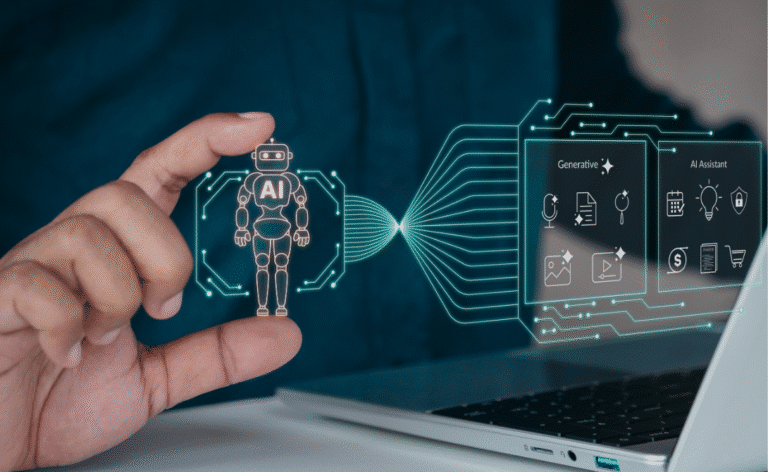Customer Experience in the Hospitality and Tourism Sector: Precisely Managing Digital Services
19. November 2025
In the hospitality and tourism sector, customer experience (CX) is increasingly becoming the focal point of digital system landscapes. Many companies are modernizing their core processes and migrating them into platform architectures where customer experience is no longer treated as a separate step but is instead embedded directly into processes, data flows, and applications.
Recent market analyses clearly reflect this shift: According to Gartner, marketing budgets in the travel and hospitality sector increased from 7.3% of total revenue in 2023 to 8.4% in 2024. This budget growth mirrors the move toward platforms in which interaction data, personalization, and operational control are no longer siloed but conceived as a cohesive system.
As a result, the key question is how to interlink data streams, API layers, CRM and CDP integrations, and real-time personalization in a way that ensures every interaction delivers measurable value—from conversion and loyalty to operational stability in volatile markets.
360° Customer View: Integrated Data Models and API-First Architecture
The core technical challenge lies in making interaction data usable across systems—structured, harmonized, and fed back into operational systems in real time.
Booking platforms, loyalty programs, payment providers, mobile apps, and IoT sensors in hotels or at airports generate vast volumes of data, which remain disconnected without a consistent data model. In the hospitality sector especially, this data is often spread across PMS systems, channel managers, booking portals, and local applications, making it difficult to gain a unified view of guest interactions.
A true 360° customer view emerges when multiple technical layers work together:
- Identity resolution (matching, merging, consent)
- Unified data models for booking, customer, and usage data
- Event streaming for real-time data (e.g., Kafka)
- API-first integration layer to decouple systems
- Feedback loops into CRM, CDP, and front-office systems
The result is an architecture that enables segmentation based on behavior rather than static profiles, supports personalized interactions throughout the entire traveler journey, and ensures operational decision-making through reliable analytics and forecasting models.
Customer experience becomes a self-learning data system—improving with every booking, check-in, and service interaction.
Improving CX Through Consistent Data and Process Integration
Today’s travelers move fluidly between web, app, messaging, self-service terminals, partner platforms, and in-person interaction. They expect a seamless experience—regardless of channel or device. The hospitality and tourism industry faces additional pressure from fluctuating demand, short booking windows, and dynamic pricing. This creates an environment in which technical consistency across all channels becomes essential.
This consistency is achieved through a modern experience architecture made up of several components:
- BFF (Backend-for-Frontend) and API gateways to cleanly separate frontend and backend
- Event-driven models that transmit interaction data in real time
- Recommendation engines that provide context-specific content
- Dynamic offer logic that accounts for availability, pricing, and capacity (inventory management, seat/room allocation)
The result is a digital customer experience architecture that stabilizes operations and reduces manual friction—for example, through automated upselling, personalized booking flows, or precise capacity control in hotel, airline, and mobility systems. Customer experience becomes part of the broader technical architecture—from identity to booking to service. The outcome is a control model that consistently reflects the entire travel chain.
Customer Experience and System Architecture: The Foundation of Operational Impact
Before customer experience can deliver measurable impact in operations, companies need an architecture that reliably processes interactions, data flows, and decision logic. Only then do business effects become tangible.
Companies with integrated CX architectures benefit from:
- Higher conversion rates thanks to more relevant and dynamic offerings
- Stronger customer loyalty through consistent, personalized interactions
- Efficiency gains from linking CX and EX processes (support, self-service, payment, identity)
- Scalability, as new markets or brands can be integrated via modular platform components
Customer experience thus becomes an operational model built on data quality, integration capability, and stable process execution. For hotel chains, airlines, and mobility providers in particular, occupancy rates, pricing logic, and service levels depend directly on this technical foundation.
Transformation in Travel: Aligning Architecture, Processes, and Operational Reality
Many companies in the hospitality and tourism sector still rely on fragmented, legacy system landscapes. Often, there is a lack of speed, data quality, and integration capability to reliably meet modern CX expectations.
Outdated platforms, manual processes, and isolated data silos hinder both scalability and personalization—while customer expectations, data protection requirements, and platform pressure continue to rise. It’s common to find multiple parallel PMS systems, separate loyalty databases, or decentralized booking systems that make operational decisions more difficult.
This is exactly where CONVOTIS brings in its technological and operational expertise. Our focus areas include:
- API-first integrations for heterogeneous system landscapes
- Building scalable data, integration, and CX platforms
- Event-streaming architectures for real-time personalization
- Integrating CRM, booking systems, loyalty programs, and modern frontends
This architecture increases the controllability of core processes—from capacity management to service automation and dynamic offer logic. Only when data architecture, processes, and operational systems converge into a unified platform logic can a customer experience structure emerge that delivers measurable business value.






